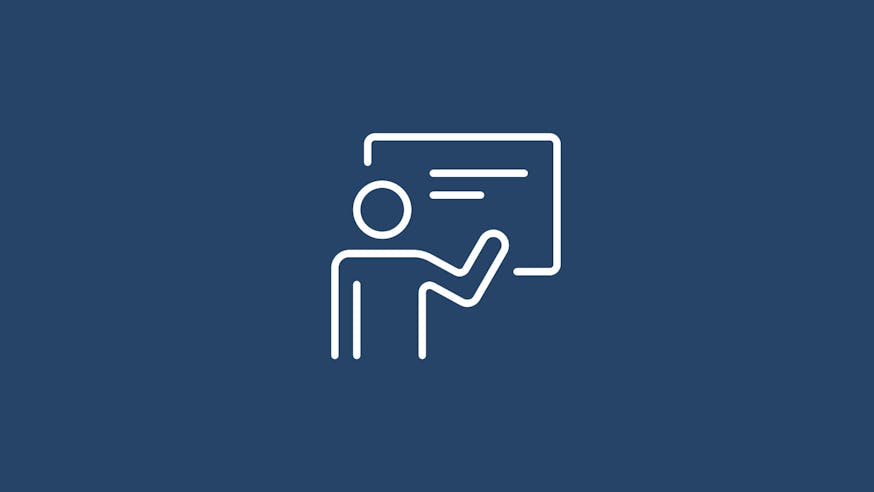Liberty Exhibit
Big Idea 1: Researching the Revolution
Picture a scene from the Revolutionary War. What do you see? Perhaps men with white hair, British soldiers wearing red coats, or long lines of troops firing muskets. But what did the Revolutionary War actually look like? What sort of people actually experienced the war? What hardships did they face? What did they experience in battle? What did they wear? Without the benefit of photography, which came decades later, the intimate details of the war can be difficult to picture.
So how do we know what the war looked like? How can we begin to study and understand the experiences of those who lived through it? Through in-depth research! This is what artist Don Troiani does, and, using him as an example, we can understand how research helps us to picture the past as accurately as is currently possible.
Based in Connecticut, Don Troiani is a painter of historical scenes. He has dedicated much of his decades-long career to imagining and recreating what the Revolutionary War looked like. A painter needs brushes and paint, but an artist who paints history needs other tools as well. Troiani’s paintings reflect his passion for researching history, a process that often begins more than five or six years before he puts a paint stroke on canvas! What methods and tools does Troiani — and historians as well — use to research the Revolution?
Examination of Primary Sources
Primary sources are first-hand accounts or products of historic events created by the people who lived through, witnessed, or were directly impacted by those events. These materials offer direct evidence of the past. By examining primary sources, we learn about the people and events that shaped history from those who were alive at the time. Just like a detective uses clues to solve crimes, historians use primary sources as evidence to understand the past.
You, too, can examine primary sources — in fact many are available online, or in repositories like archives, libraries, museums, and historical societies that are near you. But be careful! When examining a primary source, it is important to understand the context and motives of the creator. Who was the creator? When was this material created? Why did they write this letter, create this painting, or otherwise make this record that you are examining? Who was their intended audience? Asking these questions — a process historians and educators call using historical thinking skills — can help us understand any biases in the record, help us understand how it fits with other records created at the time, and give us more insight into the thinking of people in the past. Here are a few types of primary sources that historians — and you — can examine to learn about the past while using your historical thinking skills:
Documents
Primary source documents are materials from the past that use the written word to communicate information.
Examples from the Revolutionary War include:
- Letters between members of the Continental Congress and those sent to their families
- Muster rolls showing the names, number, and roles of soldiers in various regiments of the Continental Army
- Estate inventories showing the property owned by an individual at the time of his or her death
- Diaries and journals written by soldiers, their families, and community members
- Court records of people suing for their freedom from slavery
- Applications for military pensions
These documents are important to historians as they provide specific evidence to answer questions about the past. For example, at the center of Troiani’s painting Artillery of Independence, Siege of Yorktown, Virginia, October 9, 1781, General George Washington is shown firing an 18-pound iron cannon. By studying documents in the collection of the United States National Archives and Records Administration, Troiani was able to learn more about the Continental Army’s artillery used at Yorktown. He found the lists of all the artillery and supplies that were shipped from Philadelphia to Virginia to arm Washington’s troops to besiege the British. These primary source documents helped him depict the correct cannons in his image of the Siege of Yorktown.
Artwork
Any artistic products that are created during the time in history being studied are considered primary sources. These sources include static visual materials like paintings, posters, eyewitness sketches, personal drawings, sculptures, and engravings, but could also include music, movies, video, and photography.
Like documents, historical artwork is an important tool for exploring the past. For instance, Paul Revere’s engraving of what we have come to know as the Boston Massacre, titled The Bloody Massacre, served as a propaganda tool to show the British troops as murderers of peaceful civilians. Historians trying to understand this event consult that image as well as other written sources from people who experienced it.
Don Troiani studies historical artwork to help in portraying various groups that fought in the Revolutionary War. For the painting, Battle of Kingsbridge, Troiani examined a sketch by a Hessian Jäger, Captain Johann Ewald, who took note of the clothing worn by the dead and wounded Stockbridge Indians following the battle in 1778. Ewald sketched the appearance of one Stockbridge Indian in his journal and wrote a description of his sketch, the only known image of a Stockbridge soldier from the war. Don Troiani represented the appearance of the Stockbridge Indians in his painting of the Battle of Kingsbridge based on Ewald’s sketch and description.
Archaeological Artifacts
Archaeology is the study of human history through the excavation of historic sites — land on which important events are thought to or known to have happened, or where people of interest are thought or known to have lived — and the analysis of any artifacts that are found. Archaeologists use what they discover to give us a broader understanding of what life was like in the past.
Perhaps the most famous archaeological achievement was the discovery of King Tutankhamun's tomb in 1922. The over 5,000 objects found in the tomb gave historians a rare glimpse into the lives of people who lived in Ancient Egypt. Archaeologists have discovered objects that have helped us learn about people and events throughout history, including the Revolutionary War. Many objects worn or carried by soldiers during the war — like musket balls, cartridge boxes, and canteens — were found thanks to the work of archaeologists. Even today, archaeological research is still being conducted at Revolutionary War battlefields and encampment sites.
Objects
Archaeological excavation isn’t the only way that we can see three-dimensional materials from the past. Sometimes they are not buried in the ground, left by past generations, but are passed down in families, donated to museums and historical societies, or kept in private collections. Studying these objects gives us a better understanding of and appreciation for the complex lives of the people who interacted with those objects.
Don Troiani collects and owns hundreds of objects, including muskets, swords, buttons, and clothing, from the Revolutionary War. His collection inspires him and often directs the course of his paintings. By owning these objects, Troiani can hold them and feel their texture, weight, and substance. This gives him a better understanding of how a soldier might have carried and used these objects during the war. When Troiani wants to feature a delicate or rare object, a reproduction is made so that it can be handled by the people who model for him as he is preparing to paint. Troiani uses these objects to document every detail down to the size of a soldier's button or the way a wool uniform jacket fits.
Among the most colorful and ornate objects in Troiani’s collection are the arms, or weapons, and insignia, or marks of distinction, of the German troops who fought alongside the British during the Revolutionary War. In the painting Brunswick Broadswords, The Brunswick Dragoons at the Battle of Bennington, objects from Troiani’s personal collection, such as the broadsword, gorget, and cartridge box plate, can be seen.
Examination of Secondary Sources
Secondary sources are accounts written or materials created after the historical period being studied ended. They are often produced by historians, and many times artists as well, and are created using analysis of primary source materials. Therefore, secondary sources are interpretations of historic events.
Secondary source materials include articles in newspapers and magazines, biographies, books, documentaries, or articles found in scholarly journals that evaluate or criticize someone else's original research. The history textbook you use today is a secondary source. Secondary sources are extremely helpful to historians in building a more solid historical narrative since these sources are often based on extensive research.
Field Study
Visiting the actual sites where historical events took place offers another way to help in recreating and understanding the past. Don Troiani often visits the battlefields he paints in order to get a first-hand experience of the physical location. For example, in preparation for his painting Concord Bridge, The Nineteenth of April, 1775, Troiani visited Minute Man National Historical Park in Massachusetts and toured the battlefield. He chose to paint the scene from the viewpoint of the minute men firing across the North Bridge at the British troops. Troiani visited the park on the exact date and the exact time when the battle took place. Alongside primary source research, this experience provided him the ability to understand the landscape and viewpoints at Concord so he could recreate what the area probably looked like in April of 1775. The lighting, changing mood of the sky, and motion of the trees blowing in the wind add to the sense of reality in Troiani’s painting. He was careful not to include details that would not have been present at the time of the battle. For example, in this painting, there are many fewer trees than are actually along the Concord River today, because in 1775 much of the land was cleared for farming and firewood.
Looking for What’s Missing
The primary sources that exist from the past can tell us a lot about what life was like, but they can’t tell us everything. What has been kept over the years, put into museums, searched for by archaeologists, or written about by historians has often been a reflection of the people and events deemed to be most important by those in power in communities and in society and of the people who were most able to keep items safe over many years. That means sometimes people and perspectives are missing.
But just because we have little direct documentation of a person or perspective doesn’t mean they should be forgotten. Historians can examine existing primary and secondary sources, artwork, archaeological discoveries and objects for people who are similar to the ones we want to learn about. And we — and you! — can ask new and different questions about existing materials to think about other stories they can tell. For example, finding primary sources created by people of African descent during the American Revolution can be challenging, because so many people of African descent were considered property, did not have the opportunity to learn to read or write, and were often not able to secure any property they acquired as safely as others were. But we can use some of the following to start to understand their lives: primary source documents from free people of African descent and from slaveowners, archaeological excavations and field study of the places they lived, and artwork representing them. We can also ask new questions of objects they may have made or used but weren’t considered to be theirs. Using these tools and techniques, we can work to make sure we do not forget or ignore important historical stories.
---
When we explore the Revolutionary War through the example of Don Troiani’s paintings, we can understand the importance of extensive research in attempting to accurately portray scenes from the past. He believes first-hand knowledge is critical to his art, and the only way he can paint images of the Revolutionary War is to understand all the available details inside and out. Thanks to Troiani’s research, observers of his Revolutionary War paintings can begin to see the people and events of the era as more complicated, diverse, surprising, and fascinating than initially expected. Troiani is still searching for new primary sources — such as soldiers' uniforms, letters, diaries, and photographs — which can turn up in private collections or even in family attics! New and exciting secondary sources are written by historians every year. There is so much more to be discovered...how can you help research the Revolution?
Learn More

Liberty Exhibit Teacher Resources

Liberty Exhibit Big Ideas

